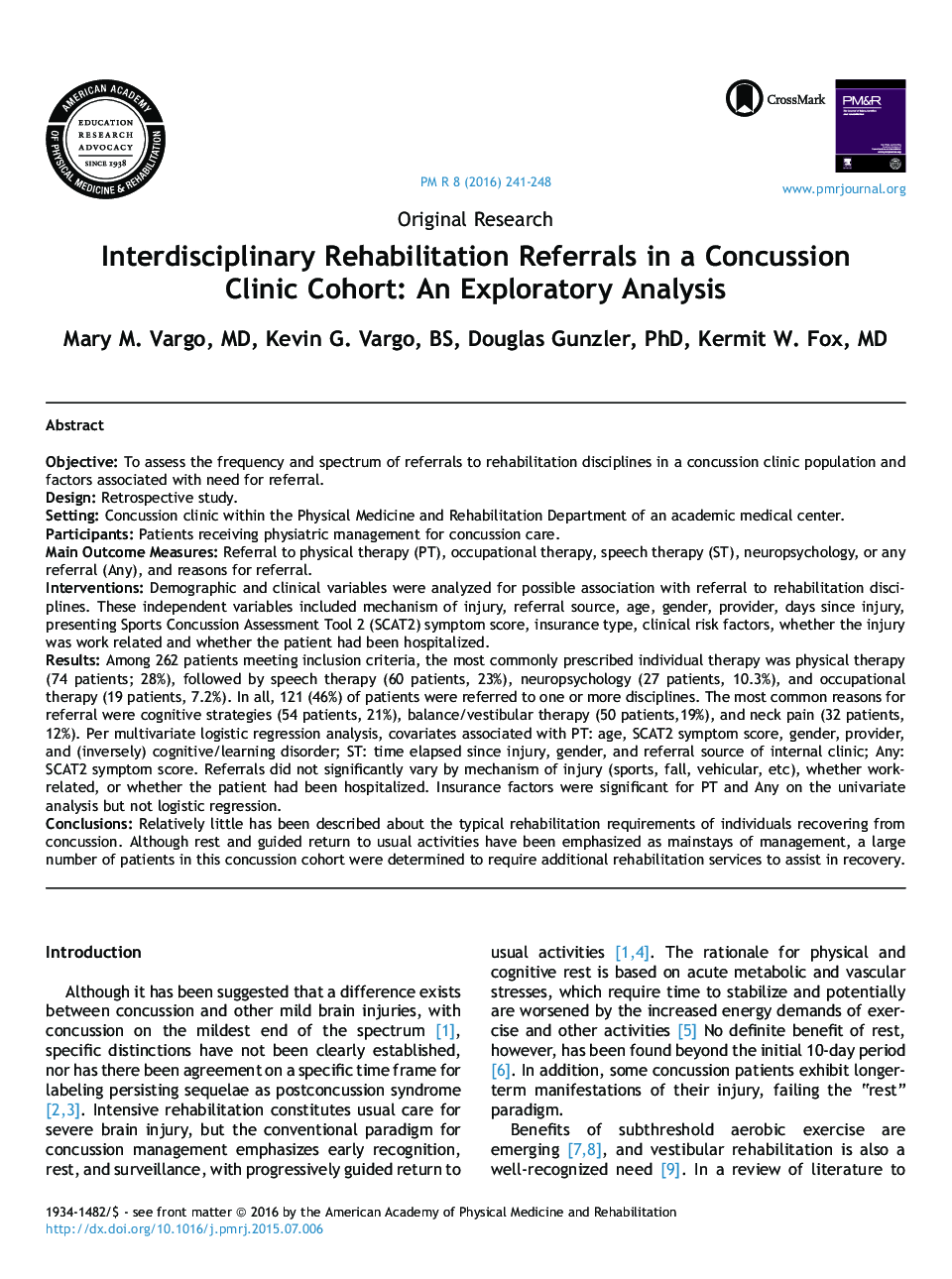| Article ID | Journal | Published Year | Pages | File Type |
|---|---|---|---|---|
| 2711947 | PM&R | 2016 | 8 Pages |
ObjectiveTo assess the frequency and spectrum of referrals to rehabilitation disciplines in a concussion clinic population and factors associated with need for referral.DesignRetrospective study.SettingConcussion clinic within the Physical Medicine and Rehabilitation Department of an academic medical center.ParticipantsPatients receiving physiatric management for concussion care.Main Outcome MeasuresReferral to physical therapy (PT), occupational therapy, speech therapy (ST), neuropsychology, or any referral (Any), and reasons for referral.InterventionsDemographic and clinical variables were analyzed for possible association with referral to rehabilitation disciplines. These independent variables included mechanism of injury, referral source, age, gender, provider, days since injury, presenting Sports Concussion Assessment Tool 2 (SCAT2) symptom score, insurance type, clinical risk factors, whether the injury was work related and whether the patient had been hospitalized.ResultsAmong 262 patients meeting inclusion criteria, the most commonly prescribed individual therapy was physical therapy (74 patients; 28%), followed by speech therapy (60 patients, 23%), neuropsychology (27 patients, 10.3%), and occupational therapy (19 patients, 7.2%). In all, 121 (46%) of patients were referred to one or more disciplines. The most common reasons for referral were cognitive strategies (54 patients, 21%), balance/vestibular therapy (50 patients,19%), and neck pain (32 patients, 12%). Per multivariate logistic regression analysis, covariates associated with PT: age, SCAT2 symptom score, gender, provider, and (inversely) cognitive/learning disorder; ST: time elapsed since injury, gender, and referral source of internal clinic; Any: SCAT2 symptom score. Referrals did not significantly vary by mechanism of injury (sports, fall, vehicular, etc), whether work-related, or whether the patient had been hospitalized. Insurance factors were significant for PT and Any on the univariate analysis but not logistic regression.ConclusionsRelatively little has been described about the typical rehabilitation requirements of individuals recovering from concussion. Although rest and guided return to usual activities have been emphasized as mainstays of management, a large number of patients in this concussion cohort were determined to require additional rehabilitation services to assist in recovery.
